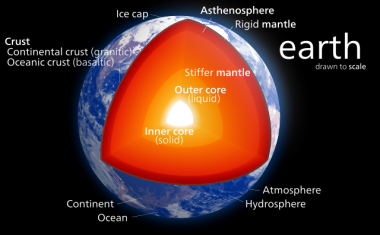Earth may be submerged in water in a billion years due to its shrinking crust

There already exist a number of doomsday theories: the sun expanding in 5 billion years and swallowing up the Earth, an asteroid hitting the planet and wiping out mankind, climate change causing the world to die little by little every year.
Well, here's another scenario to add to those doomsday theories: Scientists infer that the Earth may be completely submerged in water in a billion years due to the planet's shrinking crust.
A team of scientists led by Bruno Dhuime of the University of Bristol in the United Kingdom recently found out that the Earth's crust, which forms the land we live on, has been slimming down for the past years.
After studying the chemical composition of 13,000 rock samples from around the world, Dhuime's team were able to estimate the thickness of the Earth's crust at different times in the past.
Some 3 billion years ago, the researchers believe the continents were way thinner. Geographic activities such as plate collisions caused the crust to be beefed up in the past 2 billion years, reaching its current average thickness of 35 kilometres.
However, Dhuime's team believes that due to erosion, the Earth's crust is again beginning to get thinner.
"If it continues for the next 2 billion years, then the crust will again reach that state where the continents are submerged beneath the ocean," Dhuime explained.
"I'm thinking Waterworld," the head researcher added.
Should this be a cause of alarm for mankind? Not just yet, according to Clark Johnson of the University of Wisconsin-Madison.
Johnson thinks the Earth's crust can still be built up by magma that attaches to its base. However, it is also possible that erosion will outpace magma buildup, leading to Dhuime's theory to turn into reality.
"There are a lot of assumptions and models in here," Johnson said.











